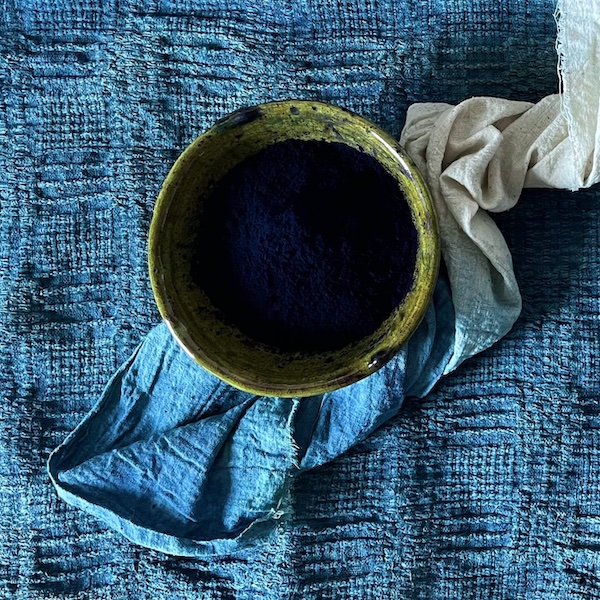
We get lots of emails from customers about challenges with dyeing and needing Botanical Colors’ President Kathy Hattori’s help. Why not share the learning so we can all benefit? From our inboxes to you, it’s simple: You Asked, Kathy Answered. Email questions@botanicalcolors.com with your plea for help!
YOU ASKED: Indigo is often used as a natural colorant in soap making and I have been using your organic indigo powder for the past couple of years. As I’ve been researching about processing my fresh indigo plants to turn into powder I’ve started wondering about using indigo powder for soap making and skin safety. It is my understanding that you have to add something like lime or soda ash to change the ph (and add oxygen) to get the pigment to form. I don’t see these ingredients listed on indigo powder labels. Should they be? And then is the powder not actually safe for skin contact? Hoping you all might be able to help answer this??
KATHY ANSWERED: A small amount of lime (calcium hydroxide) is used to help precipitate the indigo pigment out of the plant and is either neutralized or washed out in the pigment making process. So it’s not listed as its not really an active ingredient in the powder. What remains after precipitation occurs is the indigo pigment. We sell a textile grade of indigo powder but we have never tested it as a cosmetic ingredient since that’s not how we use or sell it. You should do your own tests and see what the results are with your soap product…and report back to us!
You might also like to read:
VIDEO: How to Make a Fructose Indigo Vat
A Deep Dive into the 1-2-3 Indigo Vat
You Asked, Kathy Answered: Indigo Dark Spots + Hapazome Tips
Shop:
The Easy 1-2-3 Fructose Indigo Kit
*Instant* Natural Indigo + Shibori Kit by Kristin Arzt
